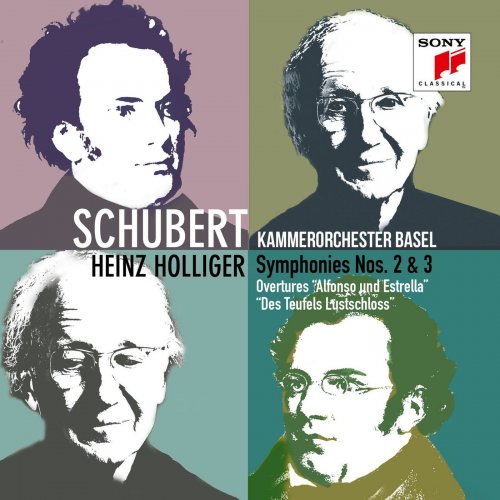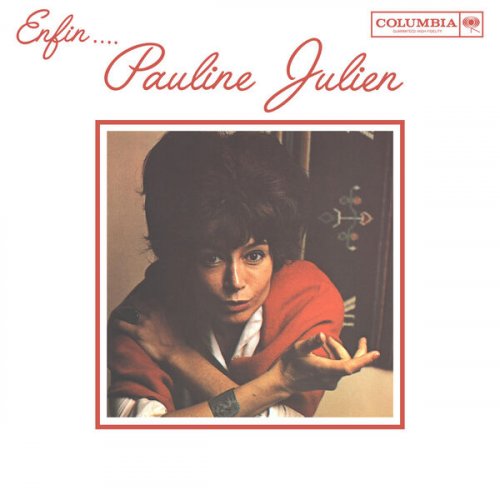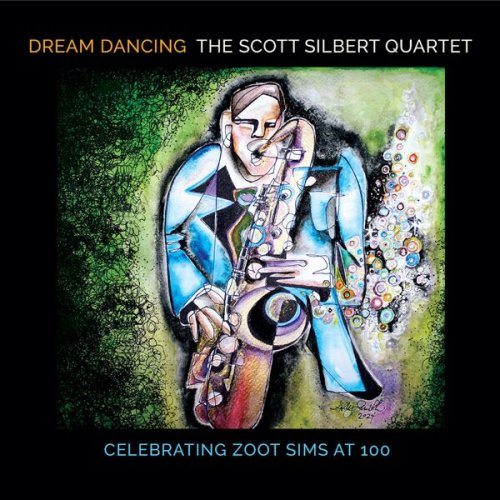Kammerorchester Basel & Heinz Holliger - Schubert: Symphonies Nos. 2 & 3 (2020) [Hi-Res]

Artist: Kammerorchester Basel, Heinz Holliger
Title: Schubert: Symphonies Nos. 2 & 3
Year Of Release: 2020
Label: Sony Classical
Genre: Classical
Quality: FLAC (tracks) / 24bit-96kHz FLAC (tracks+booklet)
Total Time: 01:15:58
Total Size: 360 MB / 1.34 GB
WebSite: Album Preview
Tracklist:Title: Schubert: Symphonies Nos. 2 & 3
Year Of Release: 2020
Label: Sony Classical
Genre: Classical
Quality: FLAC (tracks) / 24bit-96kHz FLAC (tracks+booklet)
Total Time: 01:15:58
Total Size: 360 MB / 1.34 GB
WebSite: Album Preview
1. Symphony No. 3 in D Major, D. 200 : I. Adagio maestoso - Allegro con brio (9:38)
2. Symphony No. 3 in D Major, D. 200 : II. Allegretto (4:27)
3. Symphony No. 3 in D Major, D. 200 : III. Menuetto. Vivace (4:07)
4. Symphony No. 3 in D Major, D. 200 : IV. Presto vivace (6:39)
5. Des Teufels Lustschloß, D. 84: Overture (8:58)
6. Alfonso und Estrella, D. 732: Overture (7:11)
7. Symphony No. 2 in B-Flat Major, D. 125 : I. Largo - Allegro vivace (14:42)
8. Symphony No. 2 in B-Flat Major, D. 125 : II. Andante (8:13)
9. Symphony No. 2 in B-Flat Major, D. 125 : III. Menuetto: Allegro vivace - Trio (3:10)
10. Symphony No. 2 in B-Flat Major, D. 125 : IV. Presto (9:00)
This recording was made as part of the complete recording of Franz Schubert’s symphonies with the Basel Chamber Orchestra conducted by Heinz Holliger.
Schubert wrote his Third Symphony in barely two months in the early summer of 1815. He had completed his monumental Second Symphony only a short time earlier. His Third is a bright and highly sophisticated piece with almost crystalline textures in its inner movements. In its opening movement Schubert essays a technique that he not attempted before and creates a structural link between the slow introduction and the first subject. As a result, the music of the slow introduction no longer belongs to another, eerily unfathomable world, as it had done in the case of the First and Second Symphonies, but is integrated into the musical argument. It also introduces the recapitulation. In consequence the Third Symphony gives the impression of being more “of this world” and of seeming less labyrinthine than the Second.
The other movements are likewise characterized by their sense of clarity. The second strikes a songlike note. While he was working on it, Schubert kept altering the tempo marking, gradually increasing its speed and finally turning it into an Allegretto. The seemingly simple melody is constantly repeated, but on each occasion it is lit from a different angle. The result recalls a merry-go-round. In Heinz Holliger’s interpretation, the songlike element acquires an almost glasslike quality, suggesting a carousel of porcelain figurines. The third and fourth movements are often overdriven in a way reminiscent of Beethoven, in the process acquiring an air of bombast. Holliger avoids this approach and brings a much greater focus to both movements, allowing their intricacies and their unique qualities to appear as if under a magnifying glass. The third movement is a Menuetto and as such is no Beethovenian Scherzo. Its Trio is agogically very free, with a tempo marking almost the same as that of the rest of the movement. In the fourth movement Holliger stresses the dancelike element: the quick tempo and the feathery-light and at the same time very clear accents invest the music with a distinctly Hungarian character.
Kammerorchester Basel
Heinz Holliger, conductor
Schubert wrote his Third Symphony in barely two months in the early summer of 1815. He had completed his monumental Second Symphony only a short time earlier. His Third is a bright and highly sophisticated piece with almost crystalline textures in its inner movements. In its opening movement Schubert essays a technique that he not attempted before and creates a structural link between the slow introduction and the first subject. As a result, the music of the slow introduction no longer belongs to another, eerily unfathomable world, as it had done in the case of the First and Second Symphonies, but is integrated into the musical argument. It also introduces the recapitulation. In consequence the Third Symphony gives the impression of being more “of this world” and of seeming less labyrinthine than the Second.
The other movements are likewise characterized by their sense of clarity. The second strikes a songlike note. While he was working on it, Schubert kept altering the tempo marking, gradually increasing its speed and finally turning it into an Allegretto. The seemingly simple melody is constantly repeated, but on each occasion it is lit from a different angle. The result recalls a merry-go-round. In Heinz Holliger’s interpretation, the songlike element acquires an almost glasslike quality, suggesting a carousel of porcelain figurines. The third and fourth movements are often overdriven in a way reminiscent of Beethoven, in the process acquiring an air of bombast. Holliger avoids this approach and brings a much greater focus to both movements, allowing their intricacies and their unique qualities to appear as if under a magnifying glass. The third movement is a Menuetto and as such is no Beethovenian Scherzo. Its Trio is agogically very free, with a tempo marking almost the same as that of the rest of the movement. In the fourth movement Holliger stresses the dancelike element: the quick tempo and the feathery-light and at the same time very clear accents invest the music with a distinctly Hungarian character.
Kammerorchester Basel
Heinz Holliger, conductor

![Chet Baker - Swimming by Moonlight (New Music from the Documentary "Let's Get Lost") (2025) [Hi-Res] Chet Baker - Swimming by Moonlight (New Music from the Documentary "Let's Get Lost") (2025) [Hi-Res]](https://www.dibpic.com/uploads/posts/2025-11/1762453430_wll5yt4hl4qbb_600.jpg)


![The Paris Theatre Orchestra - Honeymoon in Paris (2025 Remaster from the Original Somerset Tapes) (2025) [Hi-Res] The Paris Theatre Orchestra - Honeymoon in Paris (2025 Remaster from the Original Somerset Tapes) (2025) [Hi-Res]](https://img.israbox.com/img/2025-11/08/r9y7muqwuntg0jq7l13a4df1m.jpg)



